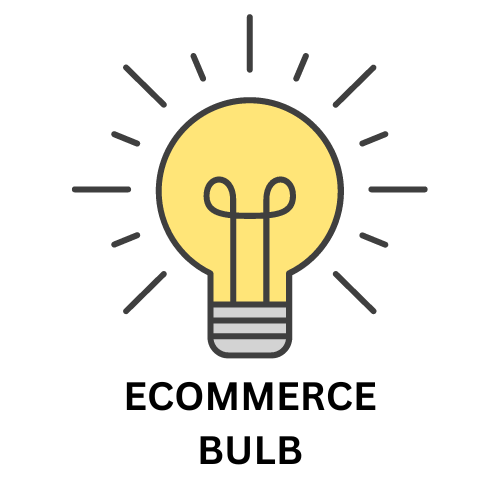In this blog post we are going to discuss how Optimizely CRO (Conversion Rate Optimization) Strategy works.
Optimizely CRO (Conversion Rate Optimization) Strategy:
Optimizely’s Conversion Rate Optimization (CRO) strategy focuses on improving the percentage of visitors who take a desired action on a website or app. Here are some key elements and best practices for an effective CRO strategy:
Key Elements of CRO
- User Research: Understand your audience’s needs and behaviors through thorough research.
- Website Analytics: Gather and analyze user data in real-time to identify areas for improvement.
- User Experience (UX) Design: Create intuitive and enjoyable user interactions.
- Landing Page Optimization: Refine entry points to maximize impact.
- Copywriting: Craft persuasive, action-oriented content.
- Page Load Speed: Ensure quick loading times across devices.
- Trust Building: Incorporate elements that boost credibility, such as testimonials and security badges.
- Conversion Funnel Analysis: Identify and address drop-off points.
- Mobile Optimization: Provide excellent experiences on all devices.
Best Practices for CRO
- Conduct Thorough Audience Research: Understand your target audience’s pain points and preferences.
- Implement and Test Clear CTAs: Use compelling call-to-action buttons that guide users towards the desired action.
- Simplify Website Navigation: Ensure a clutter-free and intuitive design to improve user experience.
- Optimize for Mobile Devices: Make sure your site is fully functional and visually appealing on mobile devices.
- Improve Website Load Time: Reduce bounce rates by enhancing page load speeds through techniques like image compression and script minimization.
- Add Trust Signals: Use customer testimonials, case studies, and industry badges to build trust.
- Personalize Content: Serve personalized content and product recommendations based on user behavior.
- Use Heatmaps: Identify which areas of a page are most engaging and optimize accordingly.
Example Strategies
- A/B Testing: Compare different versions of a webpage to see which performs better.
- Personalization: Tailor messaging and offers based on user behavior and preferences.
- Social Proof: Leverage customer reviews and testimonials to build trust.
- Clear CTAs: Ensure your call-to-action buttons are prominent and compelling.
By following these strategies and continuously testing and iterating, you can significantly improve your website’s conversion rates and overall user experience.

What is Conversion Rate Optimization?

Conversion Rate Optimization (CRO) is the process of increasing the percentage of website visitors who complete a desired action, such as making a purchase, filling out a form, or signing up for a newsletter. The goal of CRO is to improve the effectiveness of your website and marketing efforts to convert more visitors into leads or customers.
Here are some key aspects of CRO:
- Understanding User Behavior: Analyzing how users navigate your site, what actions they take, and where they drop off.
- Identifying Conversion Goals: Defining what action you want visitors to take, such as completing a purchase or signing up for a service.
- Testing and Optimization: Using A/B testing and other methods to experiment with different elements of your site (like headlines, images, and call-to-action buttons) to see what works best.
- Improving User Experience: Ensuring your website is user-friendly, loads quickly, and provides a seamless experience to encourage conversions.
By focusing on these areas, businesses can make data-driven decisions to enhance their website’s performance and achieve higher conversion rates.

How Do You Optimize Conversion Rates?

Optimizing conversion rates involves several strategies and techniques aimed at improving the percentage of visitors who take a desired action on your website. Here are some effective methods:
- Analyze User Behavior: Use tools like Google Analytics to understand how users interact with your site. Identify pages with high drop-off rates and investigate why users are leaving.
- A/B Testing: Experiment with different versions of your web pages to see which one performs better. This can include testing headlines, images, call-to-action buttons, and overall layout.
- Improve Page Load Speed: Ensure your website loads quickly. Slow-loading pages can frustrate users and lead to higher bounce rates.
- Optimize for Mobile: Make sure your website is mobile-friendly. A significant portion of web traffic comes from mobile devices, and a poor mobile experience can deter potential conversions.
- Simplify Navigation: Make it easy for users to find what they’re looking for. Clear and intuitive navigation helps reduce friction and keeps users engaged.
- Enhance Your Call-to-Action (CTA): Your CTAs should be clear, compelling, and easy to find. Use action-oriented language and make sure they stand out on the page.
- Use Social Proof: Incorporate testimonials, reviews, and case studies to build trust with your audience. Seeing that others have had positive experiences can encourage new visitors to convert.
- Reduce Form Fields: Simplify forms by only asking for essential information. Long forms can be a barrier to conversion.
- Personalize User Experience: Use data to personalize content and offers based on user behavior and preferences. Personalized experiences can significantly boost conversion rates.
- Implement Live Chat: Offering real-time assistance can help address user concerns and questions immediately, increasing the likelihood of conversion.
By focusing on these areas, you can create a more effective and user-friendly website that encourages visitors to take the desired actions.

Top 9 Conversion Rate Optimization Tools in 2024

Here are nine top tools for Conversion Rate Optimization (CRO) that can help you improve your website’s performance and increase conversions:
- Google Analytics: Essential for tracking and analyzing website traffic and user behavior. It provides insights into where visitors come from, how they navigate your site, and where they drop off.
- Hotjar: Offers heatmaps, session recordings, and feedback tools to understand user behavior and identify areas for improvement.
- Optimizely: A robust platform for A/B testing and experimentation, allowing you to test different versions of your web pages to see which performs best.
- Crazy Egg: Provides heatmaps, scroll maps, and A/B testing tools to visualize user interactions and optimize your site layout.
- VWO (Visual Website Optimizer): A comprehensive tool for A/B testing, multivariate testing, and user feedback, helping you make data-driven decisions.
- Unbounce: Specializes in landing page optimization, offering templates and A/B testing to create high-converting landing pages.
- Kissmetrics: Focuses on funnel analysis and customer behavior tracking, providing insights into how users move through your site and where they drop off.
- Mouseflow: Offers session replay, heatmaps, and funnel analysis to understand user behavior and identify conversion barriers.
- Qualaroo: A feedback tool that allows you to gather insights directly from users through surveys and polls, helping you understand their needs and improve their experience.
These tools can help you analyze user behavior, test different strategies, and ultimately improve your website’s conversion rates. Do you have any specific needs or goals for your CRO efforts?

Conversion Rate Optimization Strategy

The best Conversion Rate Optimization (CRO) strategy involves a combination of techniques tailored to your specific audience and goals. Here are some highly effective strategies:
- A/B Testing: Continuously test different versions of your web pages to see which one performs better. This includes testing headlines, images, call-to-action buttons, and overall layout.
- User Behavior Analysis: Use tools like Google Analytics and Hotjar to understand how users interact with your site. Identify pain points and areas where users drop off.
- Improve Page Load Speed: Ensure your website loads quickly. Slow-loading pages can frustrate users and lead to higher bounce rates.
- Optimize for Mobile: Make sure your website is mobile-friendly. A significant portion of web traffic comes from mobile devices, and a poor mobile experience can deter potential conversions.
- Enhance Your Call-to-Action (CTA): Your CTAs should be clear, compelling, and easy to find. Use action-oriented language and make sure they stand out on the page.
- Simplify Navigation: Make it easy for users to find what they’re looking for. Clear and intuitive navigation helps reduce friction and keeps users engaged.
- Use Social Proof: Incorporate testimonials, reviews, and case studies to build trust with your audience. Seeing that others have had positive experiences can encourage new visitors to convert.
- Personalize User Experience: Use data to personalize content and offers based on user behavior and preferences. Personalized experiences can significantly boost conversion rates.
- Implement Live Chat: Offering real-time assistance can help address user concerns and questions immediately, increasing the likelihood of conversion.
By focusing on these strategies, you can create a more effective and user-friendly website that encourages visitors to take the desired actions.




Leave a Reply